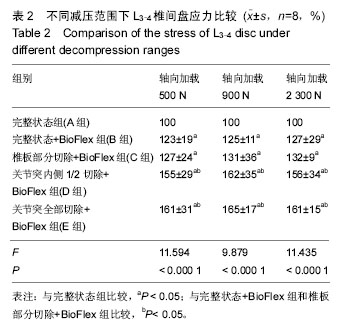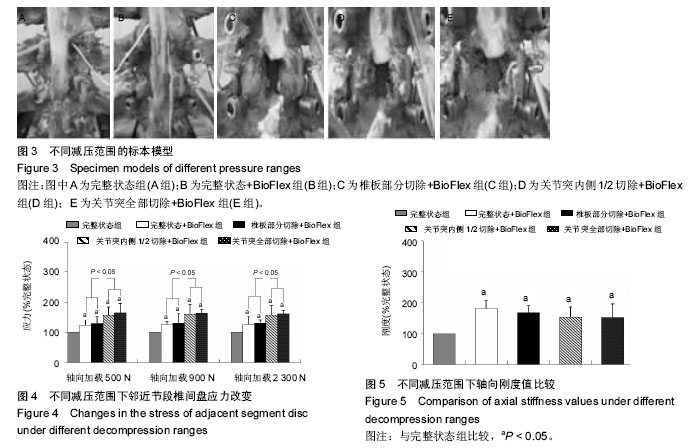| [1] Gioia G, Scotti C, Mandelli D, et al. Posterior spinal instrumentation: biomechanical study on the role of rods on hardware response to axial load. Eur Spine J. 2011;20 Suppl 1:S3-7.
[2] Weinstein JN, Tosteson TD, Lurie JD, et al. Surgical vs nonoperative treatment for lumbar disk herniation: the Spine Patient Outcomes Research Trial (SPORT): a randomized trial. JAMA. 2006;296(20):2441-2450.
[3] Schmoelz W, Huber JF, Nydegger T, et al. Dynamic stabilization of the lumbar spine and its effects on adjacent segments: an in vitro experiment. J Spinal Disord Tech. 2003;16(4):418-423.
[4] Cheng BC, Gordon J, Cheng J, et al. Immediate biomechanical effects of lumbar posterior dynamic stabilization above a circumferential fusion. Spine (Phila Pa 1976). 2007;32(23):2551-2557.
[5] Panjabi MM, Henderson G, James Y, et al. StabilimaxNZ) versus simulated fusion: evaluation of adjacent-level effects. Eur Spine J. 2007;16(12):2159-2165.
[6] Liu CL, Zhong ZC, Shih SL, et al. Influence of Dynesys system screw profile on adjacent segment and screw. J Spinal Disord Tech. 2010;23(6):410-417.
[7] Liu CL, Zhong ZC, Hsu HW, et al. Effect of the cord pretension of the Dynesys dynamic stabilisation system on the biomechanics of the lumbar spine: a finite element analysis. Eur Spine J. 2011;20(11): 1850-1858.
[8] Shih SL, Chen CS, Lin HM, et al. Effect of spacer diameter of the Dynesys dynamic stabilization system on the biomechanics of the lumbar spine: a finite element analysis. J Spinal Disord Tech. 2012;25(5): E140-149.
[9] Galbusera F, Bellini CM, Anasetti F, et al. Rigid and flexible spinal stabilization devices: a biomechanical comparison. Med Eng Phys. 2011;33(4):490-496.
[10] Wiseman CM, Lindsey DP, Fredrick AD, et al. The effect of an interspinous process implant on facet loading during extension. Spine (Phila Pa 1976). 2005;30(8):903-907.
[11] Ilharreborde B, Shaw MN, Berglund LJ, et al. Biomechanical evaluation of posterior lumbar dynamic stabilization: an in vitro comparison between Universal Clamp and Wallis systems. Eur Spine J. 2011;20(2): 289-296.
[12] Lindsey DP, Swanson KE, Fuchs P, et al. The effects of an interspinous implant on the kinematics of the instrumented and adjacent levels in the lumbar spine. Spine (Phila Pa 1976). 2003;28(19):2192-2197.
[13] Park SW, Lim TJ, Park J. A biomechanical study of the instrumented and adjacent lumbar levels after In-Space interspinous spacer insertion. J Neurosurg Spine. 2010;12(5):560-569.
[14] Stoll TM, Dubois G, Schwarzenbach O. The dynamic neutralization system for the spine: a multi-center study of a novel non-fusion system. Eur Spine J. 2002;11 Suppl 2:S170-178.
[15] Wild A, Jaeger M, Bushe C, et al. Biomechanical analysis of Graf's dynamic spine stabilisation system ex vivo. Biomed Tech (Berl). 2001;46(10):290-294.
[16] Kaner T, Dalbayrak S, Oktenoglu T, et al. Comparison of posterior dynamic and posterior rigid transpedicular stabilization with fusion to treat degenerative spondylolisthesis. Orthopedics. 2010;33(5):309.
[17] Cansever T, Civelek E, Kabatas S, et al. Dysfunctional segmental motion treated with dynamic stabilization in the lumbar spine. World Neurosurg. 2011;75(5-6): 743-749.
[18] Kanayama M, Togawa D, Hashimoto T, et al. Motion-preserving surgery can prevent early breakdown of adjacent segments: Comparison of posterior dynamic stabilization with spinal fusion. J Spinal Disord Tech. 2009;22(7):463-467.
[19] Heo DH, Cho YJ, Cho SM, et al. Adjacent segment degeneration after lumbar dynamic stabilization using pedicle screws and a nitinol spring rod system with 2-year minimum follow-up. J Spinal Disord Tech. 2012;25(8):409-414.
[20] Kumar A, Beastall J, Hughes J, et al. Disc changes in the bridged and adjacent segments after Dynesys dynamic stabilization system after two years. Spine (Phila Pa 1976). 2008;33(26):2909-2914.
[21] Schnake KJ, Schaeren S, Jeanneret B. Dynamic stabilization in addition to decompression for lumbar spinal stenosis with degenerative spondylolisthesis. Spine (Phila Pa 1976). 2006;31(4):442-449.
[22] Schaeren S, Broger I, Jeanneret B. Minimum four-year follow-up of spinal stenosis with degenerative spondylolisthesis treated with decompression and dynamic stabilization. Spine (Phila Pa 1976). 2008; 33(18):E636-642.
[23] Kim CH, Chung CK, Jahng TA. Comparisons of outcomes after single or multilevel dynamic stabilization: effects on adjacent segment. J Spinal Disord Tech. 2011;24(1):60-67. |
.jpg)


.jpg)
.jpg)
.jpg)